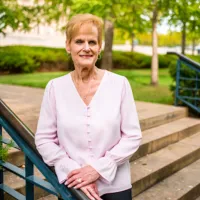
Becoming Less Pastor Centric
“Men and women are not ordained to this ministerial priesthood
in order to take priesthood away from the people
but in order to nourish and sustain the priesthood of the people.”
Lesslie Newbigin
Clergy centric led churches limit ministry potential when we become dependent on one person. When every detail of every ministry must flow through one person, we become very limited on the ministry capacity and even the rate at which we can run the ministry. Organizations tend to be operated from the top down. Many organizational charts look like a pyramid instead of a bar graph and churches are very similar. Often the pastor(s) are bottlenecks to the organization. The organization is limited to the abilities and/or capacities of the pastor(s) or leadership teams(s).
John Ritner in Positively Irritating shares, “New expressions of church require that pastoral leaders identify and renounce elements of the existing culture that foster dependence on professionals, and instead encourage a culture of permission granting, power sharing, and dream awakening. We continually remind our staff that our role is not to do the ministry of the church, but to equip others to engage in God’s mission in the ways he is leading them.”
Not only does the church need to move away from being pastor centric, but also move away from being staff centric. Too often church leaders want a ministry area to grow so they hire someone to “do” the ministry for them. This is not the intended purpose of staff. When the staff does the ministry for the disciples, the growth and maturity of disciples is stunted and they become dependent and privileged instead of developing a servant’s heart, attitude, and maturity. Otherwise, the dependence cycle is perpetuated.
Whether it is the pastor, staff, or ministry team leaders, the focus and primary task is to identify, recruit, equip, and deploy disciples into ministry. Each one of these leaders needs to have a lay person with them each time they engage in ministry so they can utilize it as an opportunity to equip, nurture, and encourage a disciple in ministry. This also eliminates the expectation that it will also be the pastor or staff member who will be the one out front. The pastor and staff become the model/equipper in the areas of congregational care, stewardship/fundraising, and building new relationships in the community. For most churches, this will require a dramatic shift in culture. But without this shift, the cycle will not be broken and a new movement of deployed disciples will not take hold.
“The moment you hand power over to other people,
you get an explosion of curiosity, innovation, and effort.”
Joshua Cooper Ramo
The Age of the Unthinkable

